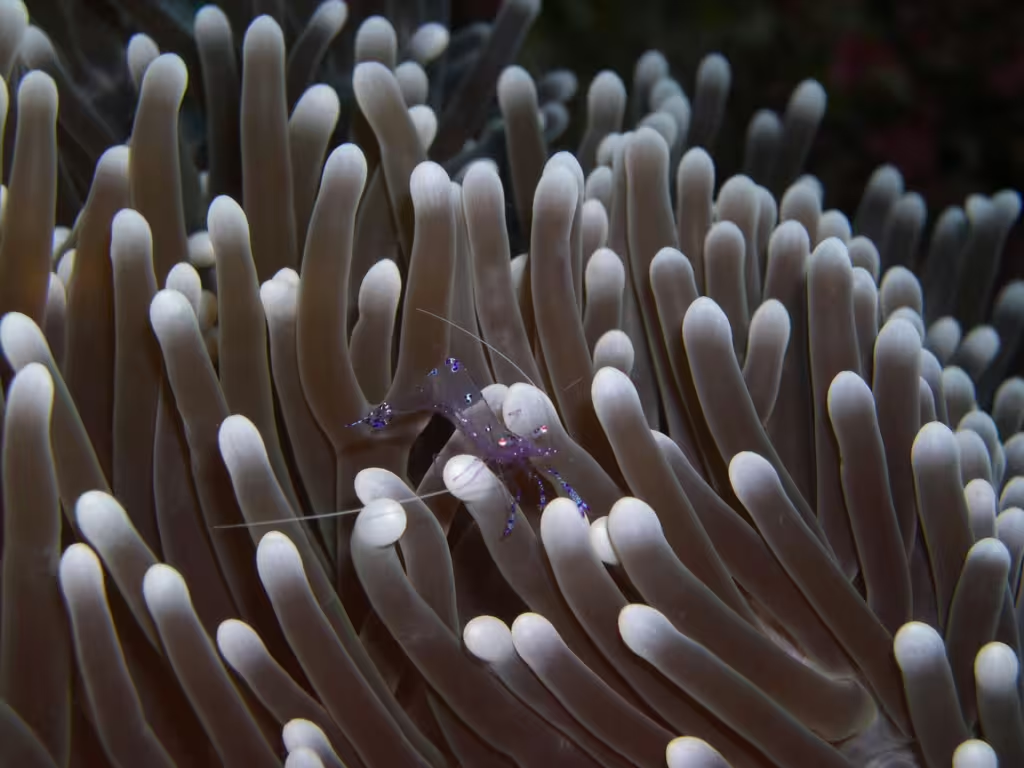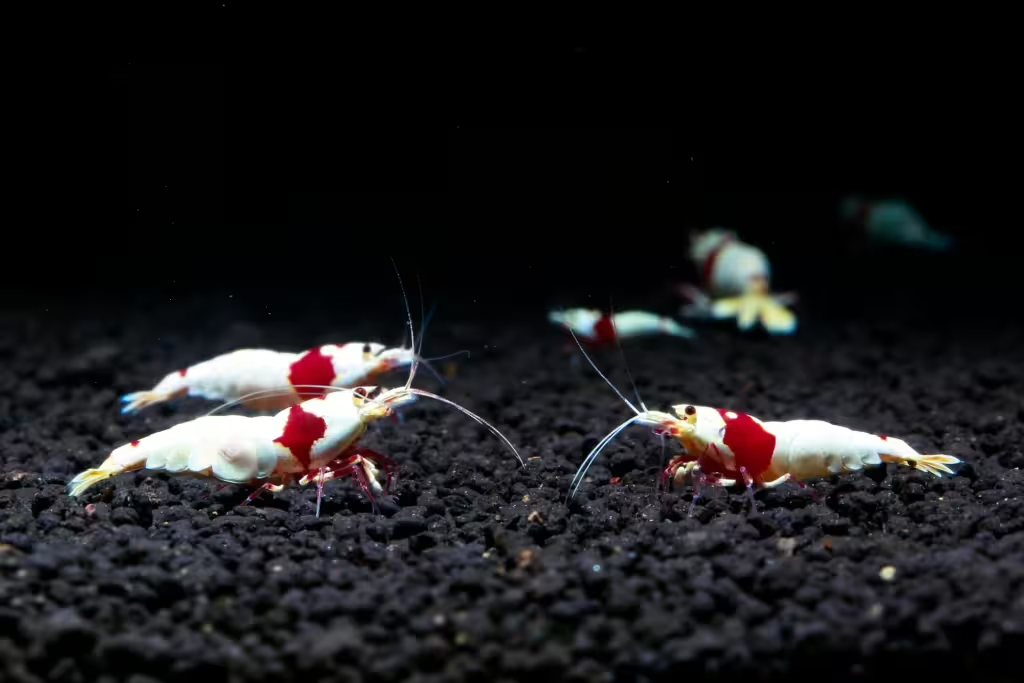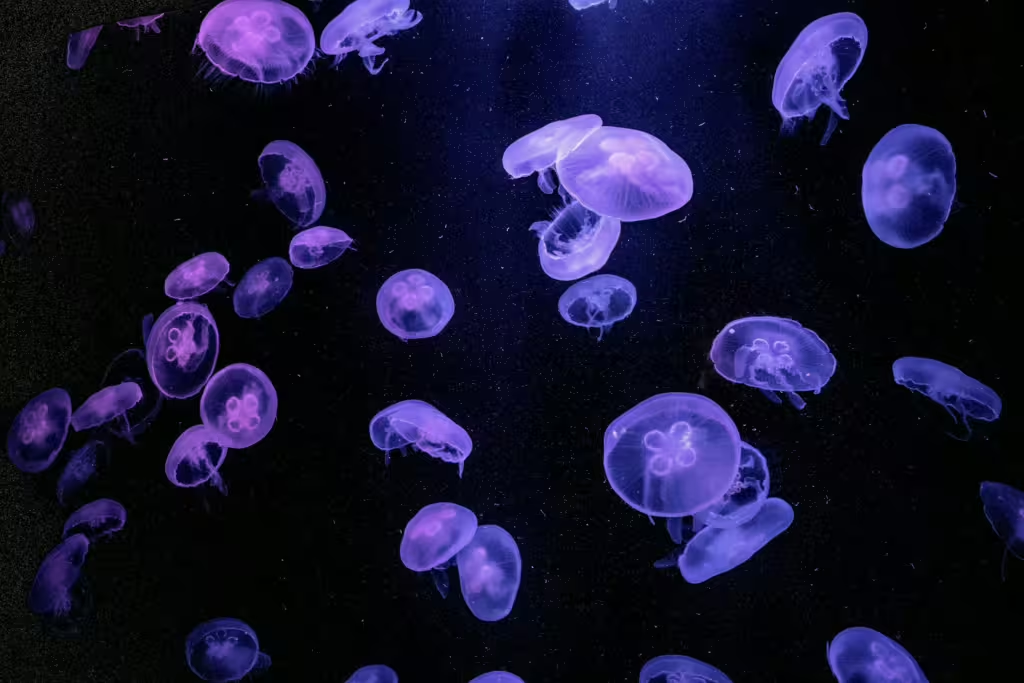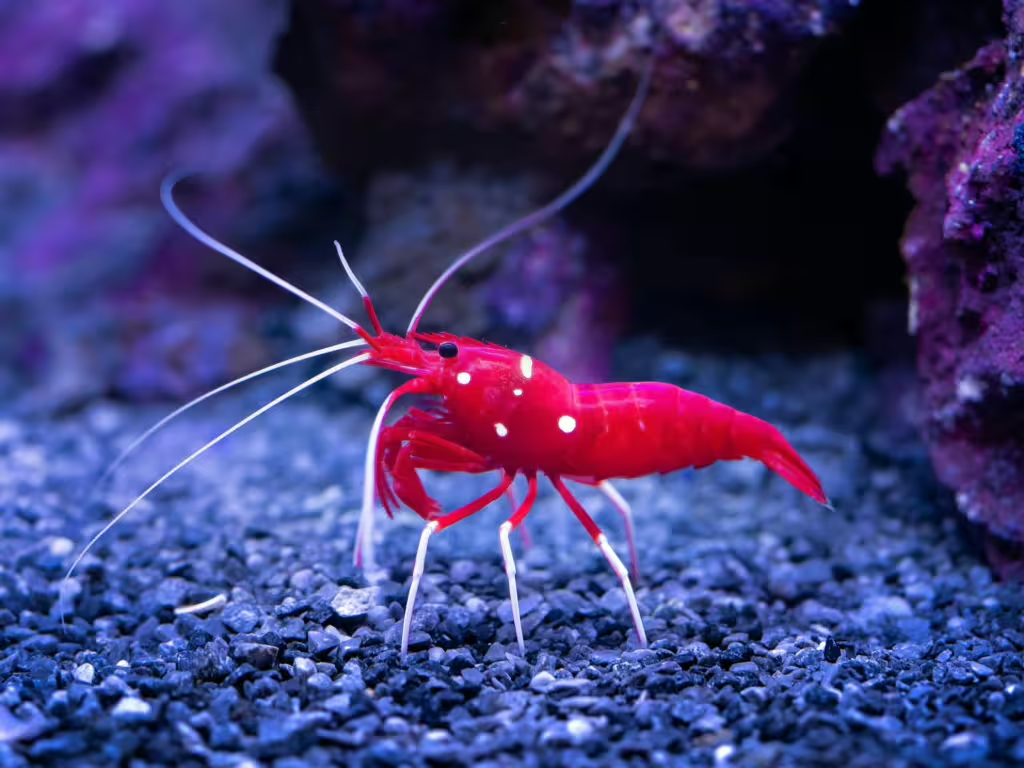By now, most of you already understand that the sheer amount of living things that call the oceans of the world their home, represents an untapped amount of nautical adventures for readers and nature enthusiasts alike. However, the scale of life that lies beneath the waves goes beyond the sharks, seals, whales, and cephalopods of the world. That’s right, in addition to giants, predators, and adorable critters, the world’s oceans are also home to a vast array of much smaller creatures, many of which are so tiny, in fact, that they often go unnoticed.
Among these many organisms are shrimp, krill, plankton, and other tiny marine creatures that, despite their diminutive size, play an oversized role in the health and balance of nearly every marine ecosystems. These creatures form the very base, the very foundation of oceanic food webs. Not only that, they also contribute greatly to global carbon cycles and are crucial to the survival of countless other marine species. Sadly, like most of the world’s most plants and animals, these wee wonders are facing increasing threats from human beings in the form of pollution, overfishing, and as is to be expected, climate change.
In this article, we will take a microscope to these minuscule marvels. We will explore their ecological importance and the unique roles they play. We will dive down deep and examine the lives of plankton, shrimp, krill, and more, examining their many varieties and the challenges they all face.
The Unsung Heroes of the Ocean

Shrimp: The Ocean’s Cleanup Crew
Shrimp aren’t just the delicious, little morsels that so many of us enjoy when we’re out to dinner. These tiny crustaceans are among the most diverse and widespread creatures of this type in the entire ocean. Shrimp inhabit a vast range of aquatic environments, from shallow coastal waters to the deep sea, and even the coldest places in the Arctic circle. They can be found in both freshwater and marine habitats. These tiny and highly adaptable creatures play a significant role in nutrient cycling and ecosystem maintenance, wherever they are found; mostly due to the face that they are scavengers. These feeding habits ensure the breakdown of organic material, the recycling of essential nutrients, and the overall health of nearly all aquatic ecosystems.
Shrimp are not only ecologically valuable but are also economically so. These animals are a mainstay of commercial fisheries, with billions harvested annually for human consumption. Most people don’t realize it, but shrimp serve as a primary source of protein for millions of people all over the globe, forming the backbone of many local and global seafood industries.
Some of the most well-known shrimp species include:
Pacific White Shrimp (Litopenaeus vannamei): This is one of the most common shrimp that you’ll encounter in your day-to-day. The Pacific white shrimp is a staple of aquaculture and is widely farmed due to its resilience, rapid growth, and ability to thrive in a number of farming conditions. As a result, these little guys contribute significantly to the global seafood market and is a favorite in many culinary traditions.
Ghost Shrimp (Palaemonetes spp.): These small, scavengers are nearly transparent, so you could be excused if you’ve never seen one before. We joke, but ghost shrimp are vital to the food web because they feed on decaying organic matter and thus, help to maintain water quality. They are commonly found in estuarine environments and are popular in the aquarium trade because they are quite useful for cleaning fish tanks.
Mantis Shrimp (Stomatopoda): Though not true shrimp, mantis shrimp are cool enough that we felt we had to mention them. These cantankerous, little blighters are renowned for their powerful, lightning-fast strikes, which they use to hunt prey and defend themselves. Some species of mantis shrimp actually possess club-like appendages which make them look like little boxers. Cuteness aside, those boxing shrimp are capable of delivering blows with the force of a bullet, making them one of the most extraordinary predators in the marine world.
Beyond their commercial and ecological importance, shrimp are natural cleaners, feeding on detritus, algae, and other microorganisms. By preventing the excessive buildup of organic material, shrimp contribute significantly to maintaining the delicate balance of oceanic food webs. They are also, undoubtedly tasty little buggers, so it comes as no surprise that they serve as a crucial food source for a wide array of marine predators, including fish, seabirds, marine mammals, and human beings. Their sheer abundance in this regard makes them an essential link in the marine food chain. In fact, without shrimp, many larger species would struggle to find sufficient nutrition, which could cause catastrophic trophic cascades all across marine food webs.
Krill: The Keystone Species of Oceanic Food Webs
Some people will mistake krill for smaller shrimp, but the truth is, these diminutive creatures are simply shrimp-like in their morphology. If you though shrimp were a ubiquitous piece of the marine food web, wait til you get a load of krill. These tiny organisms serve as a primary food source for many marine animals, including whales, seals, and penguins. All told, krill are one of the most abundant animal species on the entire planet, with populations numbering in the trillions. That is an astonishing number and one that is not often bandied about in terms of the amount of a living thing. Nevertheless, these minuscule critters are so abundant that they can be eaten in vast quantities by predators, including baleen whales. Their swarming behavior all-but-ensures that they are available in large enough quantities to slake such predators.
The most abundant species of krill is the Antarctic Krill (Euphausia superba), a species which forms massive swarms in Southern Ocean. These swarms can stretch for kilometers and contain millions of individuals per cubic meter, providing good eatin’ for everything from baleen whales and fish, to squid and seabirds. This makes them an essential piece of the Arctic ecosystem, however, that just means that any fluctuations in the population can have cascading effects on their many predator species. Still, these antarctic krill are particularly resilient, as compared to other species of a similar size. They have the ability to survive for long periods without food by physically shrinking in size and slowing their own metabolism.

Other species of krill include:
- Northern Krill (Meganyctiphanes norvegica): This species is the Northern cousin of the Antarctic krill. It can be found in the North Atlantic, where it supports fish populations such as herring and mackerel. The Northern krill’s ability to migrate vertically in the water column, a behavior known as diel vertical migration, allows them to avoid predators while simultaneously accessing planktonic food sources. They do this at night, near the surface of the water, and the movement itself actually contributes to nutrient cycling of the ocean habitat.
- Ice Krill (Euphausia crystallorophias): Inhabiting the icy waters of Antarctica, this species is slightly different than the Antarctic krill. Like their cool cousins, this species play a vital role in the marine food chain, serving as an essential food source for those amazing and unfortunate species that have adapted to the planet’s more extreme environments. Ice krill are often found beneath sea ice, grazing on algae that grow on the underside of the ice.
Beyond their role as a food source, krill play a surprisingly significant part in carbon sequestration. This is chiefly due to the fact that krill consume phytoplankton and their digestive process produces carbon-rich fecal pellets that sink rapidly to the ocean floor. The end-result is the effective transference of carbon from the surface waters to the deep ocean. This process is known as the biological carbon pump, and it has already served to help mitigate the effects of climate change by reducing atmospheric CO₂ levels.
We have also begun to harvest and consume krill ourselves. These tiny shrimplings are harvested to make krill oil, which is rich in omega-3 fatty acids, phospholipids, and antioxidants. In recent years, krill oil supplements have been marketed for their potential benefits in supporting heart health, reducing inflammation, and improving brain function. There is a negative to this increased popularity, however, as the ever-increasing demand for krill products has raised concerns about the actual sustainability of krill fisheries. Overexploitation of this vital, albeit resilient creature, could disrupt marine ecosystems, particularly in regions where krill populations are a cornerstone of the food web.
Plankton: The Foundation of Marine Life
Plankton might be the smallest organism on our list, but they might also be the most crucial. This group encompasses a diverse group of drifting organisms, including phytoplankton (tiny photosynthetic algae) and zooplankton (small animal-like organisms). Together, these microscopic creatures form the base of the marine food web, which in turn supports the vast majority of ocean life. Without plankton, oceanic ecosystems would cease to function entirely. This is due to the fact that they provide the primary energy source for countless marine animals.
Phytoplankton
The microscopic plants known as phytoplankton are among the most important organisms on the planet Earth. Through photosynthesis, these tiny things produce at least 50% of the planet’s oxygen—more than all terrestrial rainforests combined. This means that rainforests aren’t as much the “lungs of the Earth” as they are the windpipe. It turns out the phytoplankton are the real lungs of the world. They also play a key role in carbon cycling by absorbing atmospheric CO₂ and transporting it to deeper waters when they die and sink.
The problem is, tiny as they are, phytoplankton are highly sensitive to changes in ocean temperature, nutrient availability, and light conditions. What this means is that their populations fluctuate wildly in response to environmental changes. The issue here is that any major shifts in phytoplankton abundance can have widespread effects on global climate patterns.
Zooplankton

This category encompasses a wide range of organisms, from tiny protozoans to larger, more complex species such as jellyfish larvae and even certain types of krill. Many zooplankton species, such as copepods and euphausiids, serve as a crucial food source for different types of fish, whales, and seabirds.
There is a vast diversity among planktonic life. Some species, like the dinoflagellates responsible for red tides, can have harmful effects on marine ecosystems. These plankton produce toxins that impact fish and shellfish populations, which can sometimes leading to massive die-offs. The same is true of jellyfish polyps and larvae, which are part of the zooplankton community. These species can also experience population booms in response to oceanic changes, which then lead to unexpected disruptions in fisheries.
Plankton populations are an excellent scientific tool because they serve as critical indicators of ocean health. Scientists will monitor changes in phytoplankton and zooplankton abundance in order to assess the effects of climate change, ocean acidification, and pollution; three things that we generally caused in the first place. Nevertheless, because plankton are the foundation of marine food webs, their decline in any measure tends to trigger cascading effects throughout the entire ocean ecosystem.
The Growing Threats to Tiny Marine Life
Climate Change and Ocean Warming
Rising ocean temperatures and changing currents have already begun to disrupt the delicate balance of marine ecosystems. Many species of plankton, krill, and shrimp, though resilient, are also highly-specialized in many ways. These organisms rely on specific temperature ranges and seasonal cues for reproduction. This means that warmer waters can reduce krill populations, leading to declines in predator species such as whales and seabirds. Additionally, ocean acidification, which is driven by increased CO2 absorption, affects calcium carbonate-based organisms, such as krill and shrimp.
Pollution and Microplastics
Pollution, particularly microplastic contamination, has become a serious issue for the smallest of marine organisms. Plankton and krill often ingest microplastics, which can then bioaccumulate through the food web, ultimately affecting larger marine animals, ourselves included. Chemical pollutants such as oil spills and agricultural runoff are also detrimental to these tiny, sensitive organisms. Those pollutants also contribute to habitat degradation and loss of biodiversity.
True Investigator Says…
As you can see, though these amazing organisms are tiny in size, shrimp, krill, plankton, they are no less indispensable to the health of our oceans and, by extension, the very planet itself. The ecological roles of these minuscule wonders cannot be overstated. Indeed, as primary producers, nutrient recyclers, and foundational food sources, plankton and their ilk are the very key to keeping life working as it should. Sadly, these organisms are facing increasing threats from human activity, climate change, and pollution. Of all the many critters we have discussed on this website, it is in these organisms that we must put our most fervent efforts to protect. Without them, life would cease, and when that eventually does happen, as it has in several extinctions since life began on the planet Earth, everything else will go along with them.
Discover more from TrueInvestigator
Subscribe to get the latest posts sent to your email.


